Tyler Ford
12/22/2021
Before the start of the new year, we’re continuing a tradition on the Mammoth blog and taking a look back at some of our favorite posts! Although not all of these posts were published this year, they were all highly viewed. All of these posts also provide insights into important aspects of CRISPR genome editing, diagnostics, and COVID-19. They should be useful to anyone interested in learning more about these exciting and important topics.
Below we highlight our 5 favorite posts, give you a peek at the intro sections of each, and make it easy for you to navigate to the full posts to learn more.

A broad overview of CRISPR delivery methods
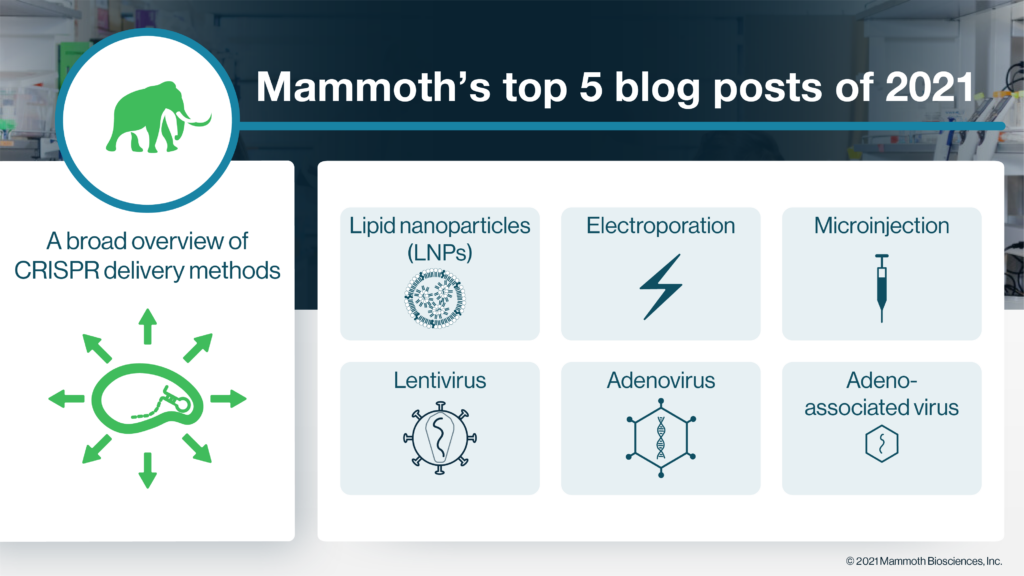
This is the second post in a two-part series on CRISPR delivery. In first post, we discussed some important factors to consider in CRISPR delivery. Here, we provide a broad overview of some popular CRISPR delivery methods. We break down delivery methods into physical/chemical methods and viral delivery methods. For more thorough reviews of CRISPR delivery see Wilson and Gilbert 2018, Yip 2020, Haasteren 2020, and Bulcha et al 2021.
Click here to read the full post: “A broad overview of CRISPR delivery methods“
How SARS-CoV-2 impacts the body
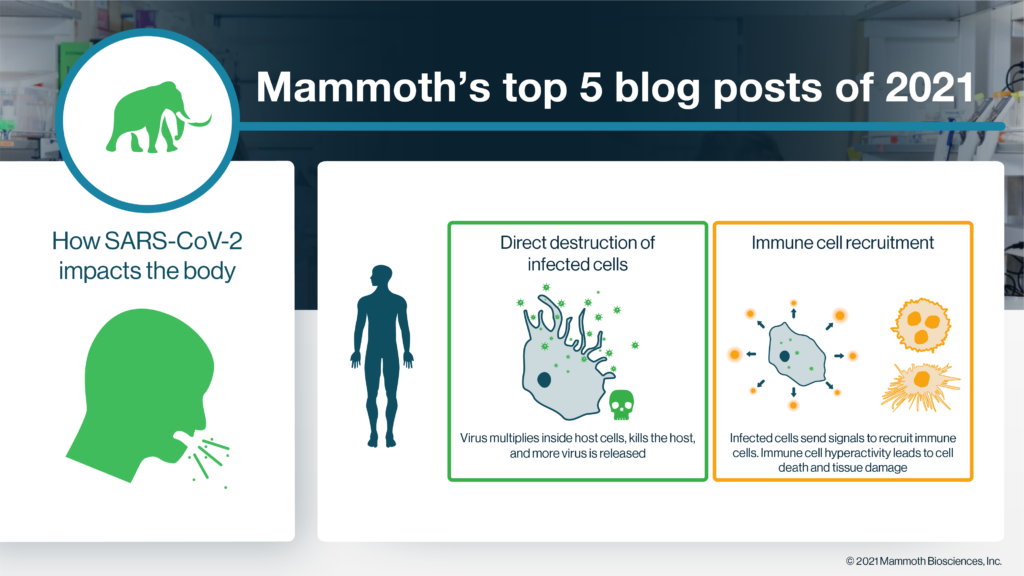
COVID-19, the disease caused by the novel coronavirus SARS-CoV-2, can have health impacts ranging from mild to deadly. Researchers are in the process of learning how and why some people get severe disease while others are asymptomatic. There is still a lot to learn, but, in this post, we cover the basics of how SARS-CoV-2 impacts the body.
Click here to read the full post: “How SARS-CoV-2 impacts the body“
Expanding the possibilities of CRISPR genome editing with Cas14 and CasΦ
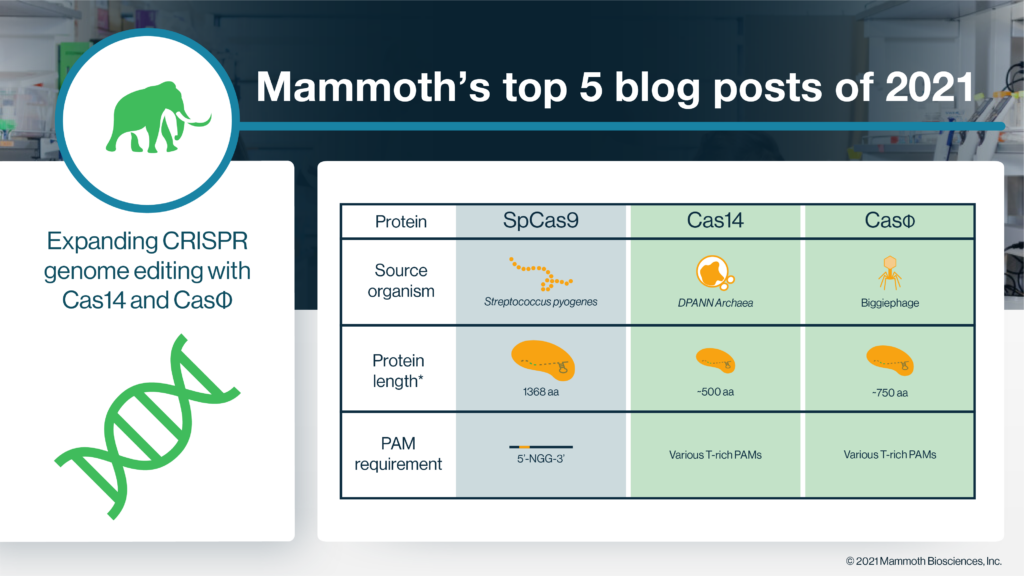
Genome editing is the process researchers use to make targeted changes to an organism’s DNA (its genome). Scientists use a variety of technologies for genome editing (see the history of genome editing here). However, since ~2012, CRISPR has made the genome editing processes more modular and adaptable. CRISPR associated or “Cas” proteins drive this process. They are relatively easy to target to specific DNA sequences. They also work in many organisms.
Yet, the main Cas protein currently used for CRISPR genome editing, SpCas9, has limitations. In this post, we cover SpCas9’s limitations and how newly discovered Cas protein families, Cas14 and CasΦ, potentially overcome these limitations. We hope Cas14 and CasΦ will enable more efficient genome editing in diverse organisms and tissues.
Click here to read the full post: “Expanding the possibilities of CRISPR genome editing with Cas14 and CasΦ“
Types of COVID-19 tests
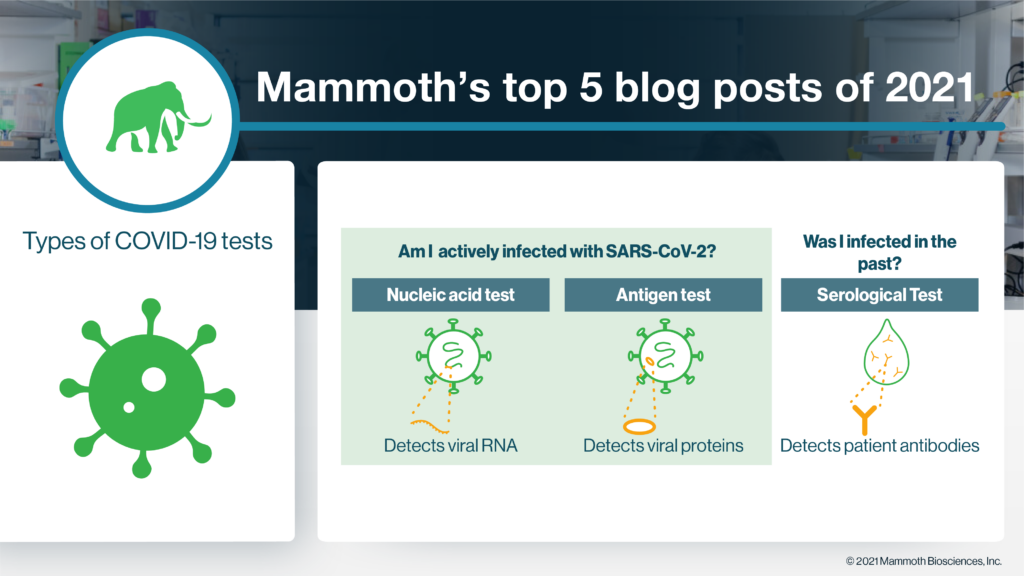
In order to slow and stop the COVID-19 pandemic, we need to be able to quickly and accurately determine who is currently infected and who has been infected with SARS-CoV-2. With these key pieces of information, we can identify hot spots for infection. We can also allocate resources to those who are most at risk. We can even loosen or tighten social restrictions in more effective ways.
There are 3 main types of COVID-19 tests available. These are:
- Nucleic acid (molecular) tests
- Antigen tests
- Serological (antibody) tests
Each type of test has its own special features and uses. Indeed, as SARS-CoV-2 infection progresses, we need different diagnostic solutions. While PCR and antigen tests are useful for detecting SARS-CoV-2 during the initial stages of infection, serological tests are useful during the late stages and post infection.
At Mammoth, we’re making CRISPR-based nucleic acid tests that are available at the point-of-need. We discuss all three kinds of tests in detail below.
Click here to read the full post: “Types of COVID-19 tests“
The Cas proteins behind CRISPR diagnostics
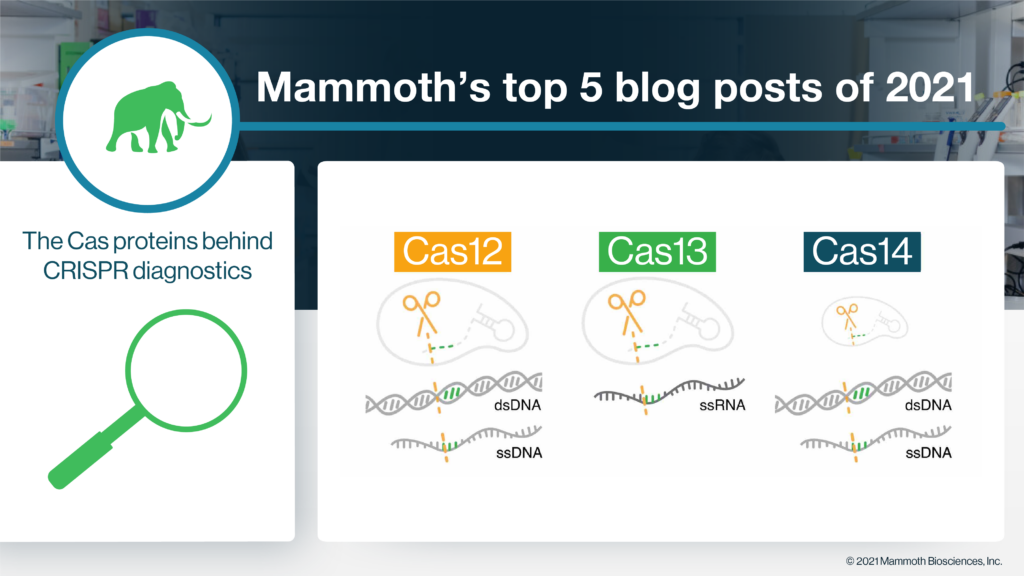
There are many protein tools in the CRISPR toolbox. Each is suited to a particular suite of uses. For example, the common CRISPR protein Cas9 is well suited for genome editing. It is not suited for CRISPR diagnostics. In this blog post, we’ll introduce you to the proteins behind CRISPR diagnostics: Cas12, Cas13, and Cas14.
Click here to read the full post: “The Cas proteins behind CRISPR diagnostics“